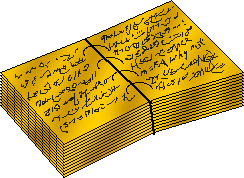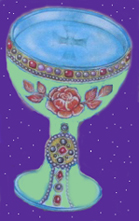
Forum encyclopédique d'histoire des Mormonismes et de la Franc-Maçonnerie & archéologie - sciences - aéronautique - paranormal - ufologie- orbs - ésotérisme - symbolisme
|
|
| | The Cult of Confucius |  |
| | | Auteur | Message |
|---|
Commandeur Adama
Magister Ordo Kolob - Admin

Nombre de messages : 8905
Age : 60
Localisation : Pays de Néphi - Mormon forest
Date d'inscription : 16/02/2007
Chevalier de Kolob - Vers la Sagesse
 A reçu la Lumière: 180 A reçu la Lumière: 180
 En quête du Vase Précieux et Elu: En quête du Vase Précieux et Elu:
    (150/200) (150/200)
 A la recherche du couple de Licornes du Jardin d'Eden: A la recherche du couple de Licornes du Jardin d'Eden:
    (7/700) (7/700)
 |  Sujet: The Cult of Confucius Sujet: The Cult of Confucius  Mer 28 Mai - 13:17 Mer 28 Mai - 13:17 | |
| The Cult of Confucius
Images of the Temple of Culture
Thomas A. Wilson
History and Asian Studies
Hamilton College
"Confucianism" is a tradition that traces its beginnings to an educated elite called shi of late antiquity that advised royal and regional feudal authorities during the Zhou dynasty (1134-250 B.C.) on governing, which emphasized the importance of virtuous rule through benevolence and proper conduct called ritual (li). The most prominent figure of this educated elite was a man named Kong Qiu (551 to 479 B.C.), usually referred to as Master Kong (Kong-fu zi or Kongzi). In the West, Kongzi is called Confucius, a name given him by Jesuit missionaries in the sixteenth century. Kongzi was born in the Watch Tower (Queli) district of Qufu, then the capital of the state of Lu of the Zhou kingdom. Kongzi was the son of Shuliang He, who, according to some sources, was a descendant of a prestigious lessor branch of a ducal lineage of the neighboring state of Song. Kongzi was raised by his mother, Yan Zhengzai after his father died before he was three. During much of the imperial era of Chinese history, the teachings and ritual practices of Confucianism occupied a privileged status in the education and training of the men who served in the civil bureaucracy. The precise ways in which the government expressed its preference for Confucianism over competing schools, and the extent to which the state actually adhered to Confucian doctrine, waxed and waned significantly during the course of the last two thousand years. Although Confucius enjoyed a certain notoriety during his own lifetime, it was not until the Han (206 B.C.-A.D. 220) that rulers began to distinguish his teachings from those of other thinkers of the Zhou dynasty by canonizing Confucianism as an officially favored teaching. The canonization of Confucianism was a gradual and complex process that involved several different types of official acts and proclamations that were not always consistently applied. Perhaps the most signal act that effected this canonization was in 136 B.C., when the Han emperor Wu (r. 141-87 B.C.), acting on the advice of Dong Zhongshu (ca. 179-104 B.C.), eliminated all court positions of canonical scholars called Erudites who taught non-Confucian books, in effect establishing Confucianism as the sole teaching of the imperial court. The court's privileging of the "Confucian canon" became a critical part of the establishment of Confucianism as orthodoxy in the Song (960-1279), with the emergence of the civil service examination system as the most important means of appointment to positions in the bureaucracy. Besides promoting a specific curriculum in the examination halls, the court also articulated its understanding of Confucian orthodoxy in a temple called the Kong temple, or the Temple of Culture. Here the spirits of Kongzi, his disciples, and later canonical exegetes and "transmitters of the Way" were enshrined and received sacrifices from representatives of the emperor. The question of which Confucians of later ages would be enshrined in the temple was controversial because it raised such issues as which commentaries on the Confucian canon were acceptable and, by the Song, who was believed to have received the true transmission of the Dao from Kongzi and Mengzi (Mencius). A basic chronology of enshrinement shows the gradual canonization of the Dao School version of the Confucian tradition, beginning in the 1240s and particularly by Ming times. | The imperial court promoted Confucianism by posthumously ennobling Kongzi, first as duke and later as king. In addition to elevating the figure of Kongzi to ever greater status, emperors also conferred hereditary titles of nobility upon his descendants, initially as marquises, and by Song times as dukes; a position Kongzi's descendants held until the 1940s. Critical to this careful attention to the person of Kongzi as the embodiment of the literati tradition was the state cult, which centered upon offering sacrifices to Kongzi's spirit in the Kong temple. The sacrifices to the spirit of Kongzi was part of a larger system of cult sacrifices to other gods and spirits. This pantheon was headed by Heaven, to which only the emperor offered sacrifices at an altar in the southern suburbs of the imperial city, followed by Earth, which received sacrifices at an altar in the northern suburbs.
|
| |
|   | | Commandeur Adama
Magister Ordo Kolob - Admin

Nombre de messages : 8905
Age : 60
Localisation : Pays de Néphi - Mormon forest
Date d'inscription : 16/02/2007
Chevalier de Kolob - Vers la Sagesse
 A reçu la Lumière: 180 A reçu la Lumière: 180
 En quête du Vase Précieux et Elu: En quête du Vase Précieux et Elu:
    (150/200) (150/200)
 A la recherche du couple de Licornes du Jardin d'Eden: A la recherche du couple de Licornes du Jardin d'Eden:
    (7/700) (7/700)
 |  Sujet: Re: The Cult of Confucius Sujet: Re: The Cult of Confucius  Mer 28 Mai - 13:19 Mer 28 Mai - 13:19 | |
| An important event in the canonizing process occurred in 195 B.C., when the founding emperor of the Han dynasty, Han Gaozu (r. 206-195 B.C.), offered a Great Sacrifice to the spirit of Confucius at his tomb in Qufu. As early as 241, sacrfices to the spirits of Kongzi and his most prominent disciple, Yan Hui, were offered in the Imperial University (Biyong). The picture on the left shows the Imperial University in Beijing. The first state temple devoted to Kongzi was built in the Liu-Song, which ruled over south China from 420 to 479. The Confucius temple in Bejing was first built in 1302, and was periodically repaired and rebuilt during the Ming (1368-1644) and Qing (1644-1911) dynasties. The temple pictured on the right is the main hall, called the Hall of Great Completion (Da cheng dian), of the Confucius Temple in Beijing, situated north east of the Forbidden City. | |
 | Beginning in the Tang era, and particularly from Song times on, the state sacrifices to Confucius in the capital became increasingly complex and closely regulated by an official liturgy. When the founder of the Southern Song dynasty reestablished the capital in Lin'an (modern Hangzhou), an imperial Confucius Temple was constructed (pictured on right). |  |
| Kongzi's forty-eighth generation descendant, Duke Kong Duanyou, followed the Song emperor, and established the southern Kong lineage. By 1136 the Kongs settled in Quzhou, Quzhou, Zhejiang, where they converted the local school temple into a temple operated by Kongzi's descendants. Later a family temple honoring Kongzi was established at a nearby lake. Around 1279, when the Southern Song fell, this temple was destroyed by fire, and was not rebuilt until 1407. The present-day Quzhou Confucius temple (pictured on left) was moved to its current location in 1520. |
According to most accounts, a temple honoring Kongzi was built in his hometown in 478 B.C. (17th year of Duke Ai of Lu), a year after his death. The sources suggest that, since the early years of this temple, the spirits of Kongzi and his disciples were represented with wall paintings and clay or wooden statues. After years of court debate, it was decided in 1530 that these spirits would not be represented by an iconic image of his likeness in the imperial temples in the capital and other bureaucratic locations. Opponents of iconic representations of Kongzi argued that such statues copied Buddhist practices of temple worship and also tended to confuse ritual ideas in ancestral sacrifice. They argued that imperial temples were constructed to honor Kongzi's teachings, not just the spirit of the flesh-and-blood man. The statues of Kongzi were removed from official temples, but they remained in the temples operated by Kongzi's family descendants, such as this statue of Kongzi in the Main Hall of Great Completion of the Confucius Temple in Qufu. | |
| Evidence suggests that as early as the eleventh century, Confucius temples had rooms to pay sacrifices to Confucius' father Shuliang He, and in 1048, a hall was built for this purpose. During the Yuan and Ming dynasties, ritualists explored the connection between the family cult of Confucius' descendants and the state cult of Confucius. When Shuliang He was posthumously honored as Duke who Gave Birth to the Sage, shrines called the Shrine for the Duke who Gave Birth to the Sage (Qisheng ci) were constructed to honor Confucius' father. The shrine in Qufu pictured here, was located immediately west of the Hall of Great Completion in 1729. The Qufu shrine has fallen into disrepair and is currently undergoing renovation; pictured here is the spirit statue of Shuliang He. |
Reference :http://academics.hamilton.edu/asian_studies/home/TempleCulture.html | |
|   | | | | The Cult of Confucius |  |
|
| | Permission de ce forum: | Vous ne pouvez pas répondre aux sujets dans ce forum
| |
| |
| |
|

